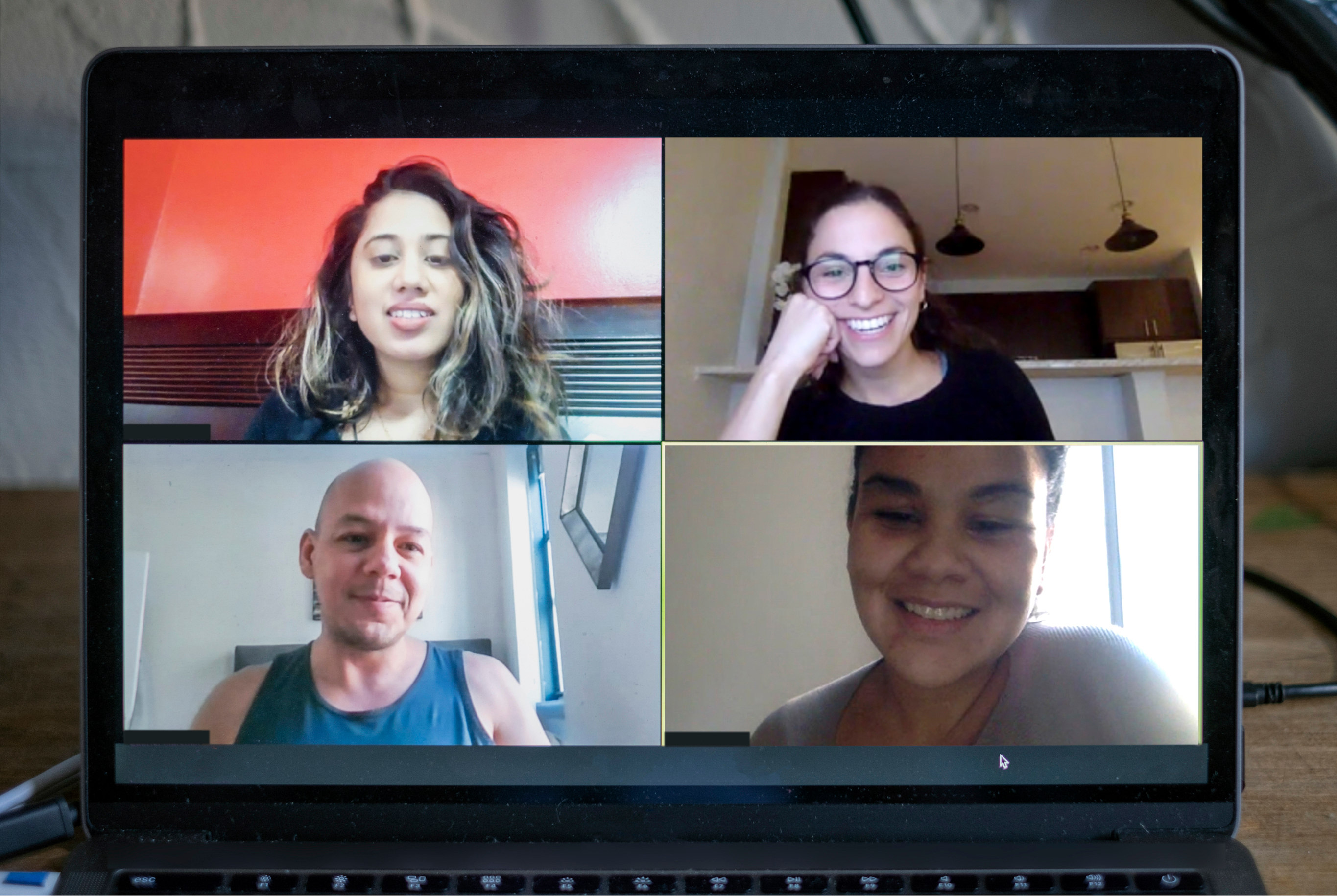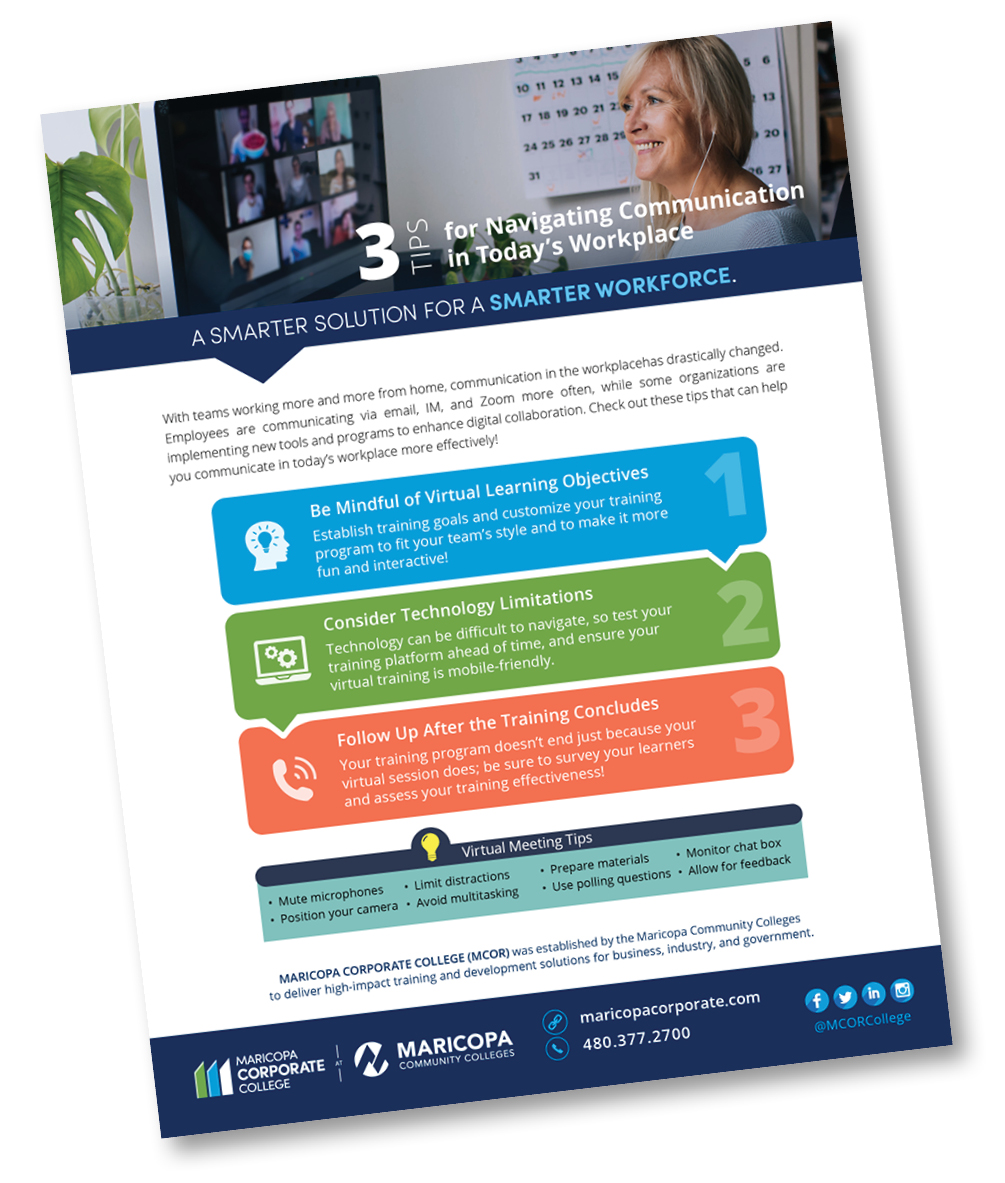Impact Breakfast Recap: Navigating Communication in Today's Workplace

The Bureau of Labor Statistics’ most recent National Compensation survey reported that approximately 7% of U.S. employees regularly worked from home before COVID-19. According to multiple independent sources, around two-thirds of Americans are working remotely now due to COVID-19. These findings raise an important question to both employers and employees: How can you ensure your teams are keeping up with the drastic shift to virtual technology to collaborate? To help answer this question, last month we hosted our Impact Breakfast entitled Navigating Communication in Today’s Workplace and welcomed C.D. Cooper as our incredible guest speaker and communication expert.
Our Favorite Takeaways
Takeaway #1: Be Mindful of Virtual Learning Objectives
What are you trying to accomplish? Consider your learning objectives while you are planning the structure of the virtual event/learning opportunity because it will affect the impact. You should begin by conducting a SWOT analysis to establish clear and effective training goals. Understand the purpose of the virtual training and then customize your training program to fit your team’s style. Virtual learning among adults is not a one-size-fits-all approach.
Research has shown that unlike live, in-person training events, virtual training is the most engaging and effective when the learners take smaller, incremental breaks at the end of every hour. It is important to make learning fun and interactive. Technological tools make this possible by allowing you to utilize the chat box, polls, Q&A, etc. Cooper recommends using Mentimeter to create interactive presentations and meetings, wherever you are. Similarly, Kahoot! is a game-based learning platform for e-learning, interactive presentations, training, and events.
Takeaway #2: Consider Technology Limitations
Sometimes technology can be difficult to navigate, so test your training platform (e.g. Zoom, Cisco WebEx, GoToMeeting) ahead of time. Invite your presenters and guest speakers to join you for a trial run on the platform thirty minutes or an hour before your virtual training is scheduled to begin. If the platform or tool is new to you, do your best to learn as much as you possibly can about the new technology and its settings. Without that new tool or program working properly, there will be no virtual training. If you do not have the time to become familiar with the tool, assign someone from your team to be the moderator. A good rule of thumb is to have a moderator for virtual trainings expecting more than 50 attendees.
Ensure your virtual training is mobile-friendly. Be mindful of the fact that you may have employees joining your virtual training from their tablet or cell phone and will need to access the platform remotely.
Prepare downloadable learning activities, PDF version of the training materials, recording of the presentation, to share with participants prior to your virtual training. You can create skill practice activities to reinforce the learning concepts. Cooper suggests engaging your audience with annotation tools, such as Whiteboard in Zoom or Jamboard in Google Meet.
Takeaway #3: Follow Up After the Training Concludes
Your training program does not end just because your virtual session does! Gather their feedback to help you gauge where improvements can be made for next time. Be sure to survey your learners and assess your training effectiveness! Cooper advises separating the survey questions into three sections: (1) rate the tool – good connectivity, clear audio/video; (2) rate the environment – noise level, lighting/brightness; and (3) rate the effectiveness of the content. Lastly, review the feedback and adjust as needed.
Final Thoughts: Virtual Meeting Tips
It is a best practice in today’s remote workplace to mute your microphone when you are not speaking to help keep the background noise to a minimum. Each unmuted microphone could create additional background noise during activities like shuffling papers or even typing.
The proper web camera position is focused at eye level and should be stable. Showing yourself from the shoulders up and making eye contact with the camera helps create a better sense of engagement with other participants.
Advise your virtual training hosts, co-hosts, and moderators to find a quiet space or lock the office door before logging into the webinar or meeting. The key is to limit distractions whenever possible. Multi-tasking hinders your ability to retain new information, so refrain from replying to emails or text messages until after the meeting ends.
Do your best to prepare materials before the meeting begins, especially if you intend to share content during the meeting. You will want to ensure any files and/or links are ready in advance, not last minute.
With teams working more and more from home, communication in the workplace has drastically changed. Employees are communicating via email, IM, and Zoom more often, while some organizations are implementing new tools and programs to enhance digital collaboration. This year has pushed all of us towards embracing technology and continuing to learn!
Register today for our next Impact Breakfast Webinar: Stronger, Smarter, Better: Enhancing the Skills We Learned in 2020 to focus on how to keep building up the skills we've learned this year!



